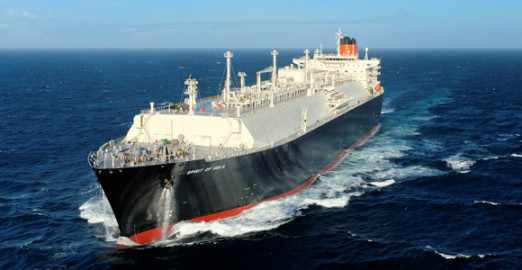The first shipment of gas from Papua New Guinea’s PNG LNG project has left for Japan this week, highlighting the potential billions of dollars of income for the project’s partners. Business Advantage PNG looks at where that income will go.

The ‘Spirit of Hela’ LNG tanker is now on its way to Japan with PNG’s first LNG shipment. Credit: ExxonMobil
Six years in the making, the PNG LNG project is expected to boost Papua New Guinea’s economy by a massive 15% in first year of production. Over the 30-year life of the project, the PNG LNG project will produce more than nine trillion cubic metres of gas, about 6.9 million tonnes per year.
How much income?

Shareholding in the PNG LNG Project.
* The Independent State of PNG also owns 10% of Oil Search Limited.
The total projected income from the project is US$31 billion. Of the one-third expected to remain in PNG, the vast majority is paid as tax revenue, dividends, royalties and infrastructure tax credits to the National Government, provincial governments and landowners, with around 10 per cent paid as operational costs.
Peter Botten, CEO of venture partner Oil Search Limited, told Business Advantage PNG, the company expects to earn in excess of US$1.5 billion (K4.2 billion) per year from the project.
The PNG Government expects its annual revenues from PNG LNG to be US$600m (K 1.7 billion) to US$ 775m (K 2.2 billion) until early next decade and then, with the development costs depreciated, to rise raise rapidly to around US$1.58 billion (K4.5billion).
Distributing the benefits
‘The big problem is whether the country uses the revenue from PNG LNG to improve living standards here and equally distribute the benefits,’ says Jenny Hayward-Jones from the Sydney-based Lowy Institute. ‘It seems to be going well, but you wouldn’t want to predict everything will be completely rosy.’
Former Treasurer Don Polye says the PNG Government has pre-borrowed the future revenue from the gas project to underwrite a $1.2 billion (K3.4 billion) loan from Swiss bank UBS for a 10 per cent shareholding in Oil Search, which is also an exploration partner in what is hoped will be the country’s second major gas project, Elk/Antelope.
‘The sad story is there will not be any funds coming in because the first flow of gas, the monies coming in will be diverted to paying off the debt, the 3 billion kina debt, UBS loan, and therefore no money will go into the sovereign wealth fund,’ Polye has claimed.
His concerns are echoed Paul Barker, the executive director of the independent think-tank, the Institute of National Affairs, but PNG’s Prime Minister, Peter O’Neill, rejects them.
‘All the funds that are coming from the benefits of LNG will go straight to the sovereign wealth fund,’ he told local TV broadcaster, EMTV.
Future expansion
Of course, all projections on income are based on the estimated current reserves up in the project’s Hides, Juha and Angore gas fields. As our recent interview with Oil Search’s Peter Botten indicates, however, there is a strong likelihood of more gas being added to the project, requiring a third and possibly a fourth train. If this happens, the figures above may well increase further.
The long road to LNG: a timeline
1987 Gas is discovered at Hides in PNG’s Southern Highlands.
2004 The PNG Gas Project is considered to pipe gas to Australia from PNG.
2007 The PNG Gas Project is shelved and work starts on devising the current PNG LNG Project.
2008 Venture partners sign a gas agreement with the PNG State.
2009 Environmental Impact Statement approved by PNG Government (October). Final project approval and first sales and marketing agreement signed for the gas (December).
2010 Construction begins on the project. Project financing finalised (March).
2011 Work on LNG plant and onshore pipeline commences (April). Work on offshore pipeline commences (October).
2012 Work on Komo Airfield commences (September).
2013 First gas enters LNG plant (September).
2014 First LNG production (April). First LNG exports shipped to Japan (May).








Speak Your Mind